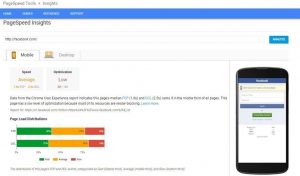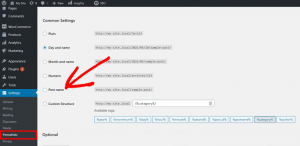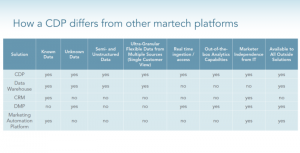— March 29, 2018
Help a Reporter Out (known as HARO) helps journalists find sources for their stories. But, you don’t have to be a journalist to benefit from this free, powerful resource. You can use it to identify PR opportunities that boost your digital marketing strategy. Thought leadership, social proof, link juice — it’s all at your fingertips with HARO, if you’re willing to put the work in to become a source.
HARO is free, but you need to be strategic with your time to get the most out of it. The return is absolutely worth the investment if you approach it thoughtfully. Here’s how to use HARO for digital marketing and start getting featured as an expert source.

Sign up for a free HARO account
Sign up for a free HARO account as a source. Here’s where things start getting strategic right away. To cut down on clutter, either use a separate email address for this or use an email address with a robust filtering capabilities. (You’re good to go if Google powers your email.)
As soon as you receive your first digest, you’ll want to filter them to a separate folder. Consider marking them as read as well. No one needs another unread email notification in their inbox.
Figure out what you’re an expert in.
HARO is all about journalists finding knowledgeable sources. Are you planning on speaking on the topic of digital marketing? Are you an expert in aromatherapy or teeth whitening? Journalists typically aren’t looking for general response. They want expertise and focus.
Have a good sense of what you can speak to before you start digging into queries or you’ll waste your time. Once you know exactly what topics you can address as an expert source, it’s simple to find relevant queries. Simply search the exact phrase in your email client.
Example: “dog sitting” “HARO”
Put together a quick bio and a headshot
Many reporters ask for a headshot, but you can’t send attachments when you reply to HARO queries. So upload a good headshot to your website or to Imgur so you can send a link in your HARO response.
Save a super short bio (100 words or less) and a longer bio (no more than a paragraph) somewhere you can easily access them, like Google Drive. Yes, you have to write a bio. And yes, everyone hates writing bios. At least this way, you only need to do it once or twice. Stick to work-related accomplishments, establish why you’re an expert, and keep it simple. Now isn’t the time to be clever.
Send a HARO response that stands out
Check HARO digests (by searching in your email client, or if you’re a glutton for punishment, reading the entire email) once or twice a day to make sure you jump on queries quickly. Reporters get hammered with dozens, if not hundreds, of responses. You want to get in early and provide exactly what they need.
Read carefully. You’ll get deleted if you forget something the journalist asked for, or if you provide a response that’s too long or too short. Journalists want you to help them do their jobs. Most prefer not to have to follow up with you again. So make it count. The more often you respond, the more you can put together a library of common responses that you can lightly edit next time.
Journalists typically aren’t looking for general response. They want expertise and focus.
For example, there are only so many summer skin care tips one can offer. If you’re a dermatologist, you might respond to 17 HARO pitches with a variant of the same paragraph on wearing sunscreen daily.
The more specific and interesting you can be, the better. And don’t expect to hear back if the journalist isn’t interested. In fact, you might not hear back even if the journalist uses your information. So set up a Google Alert for your name and your business to be on the safe side.
Agencies: Empower your clients to take advantage of HARO for digital marketing
If you’re marketing for multiple clients, HARO is still for you! Put together a PR worksheet for each of your clients as part of your digital marketing strategy. These should include bios and headshots just like the ones you wrote for yourself. Include pertinent information such as your client’s contact information and the best times to reach them. Some may be willing to do phone interviews or video spots. Keep this in your notes.
Establish a Dropbox folder with clear, high-res product images if your client is an online retailer. These should be on a plain white background with nothing seasonal.
Just as you did with your own common responses, put together replies from your client. You can achieve this by interviewing them as if you’re a journalist, or by pulling content from your client’s blog posts and marketing materials. But remember, no journalist is interested in marketing. Responses should match exactly what the journalist has asked for, without being promotional in nature. Respond on behalf of your client, letting the journalist know that you represent them and you’re happy to arrange further contact.
Be polite and reciprocate
If your response is chosen and you’re interviewed or quoted in an article, be sure to share it on your social networks. Most journalists will reach out with a link, and many will give you social-ready language that makes it simple to copy and paste right into LinkedIn. Not only is it good karma to share, it could open the door to an ongoing relationship. Journalists love fast, polite sources and they’ll turn to you again and again if you help them do their job more easily.
You can also ask that the journalist tag you in any posts from the publication where you’re featured. They don’t always have control over social promotion, but it’s worth checking.
TL;DR
Want to know how to use HARO for digital marketing? Here’s how to include monitoring HARO and replying to queries as part of your digital marketing strategy.
- Sign up for HARO.
- Search the digests for keywords related to your business and area of expertise.
- Set up an automated email filter or folder for all HARO digests (they send 3 each day).
- Start replying to queries!
- Follow the directions. Double check and make sure you followed the directions.
- Be patient. You’ll respond to dozens of queries before you get picked up.
- Be polite, helpful, and reciprocal.
- Enjoy getting your name out there!
Digital & Social Articles on Business 2 Community
(73)








